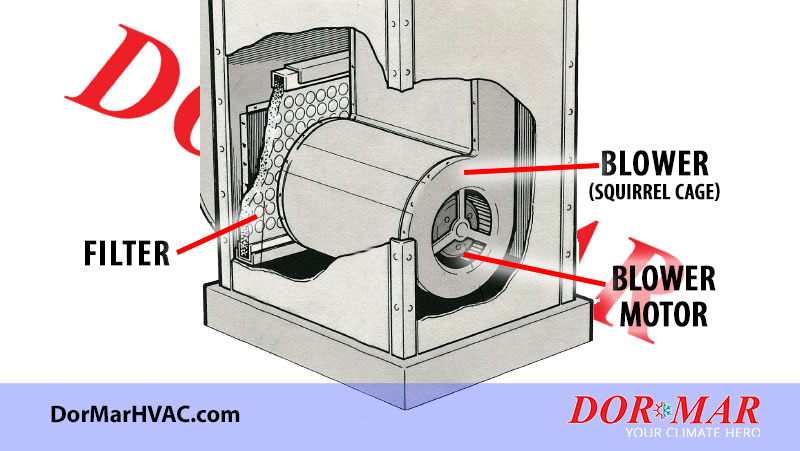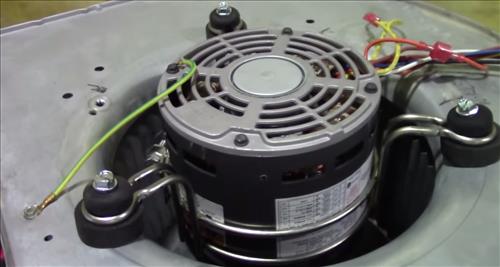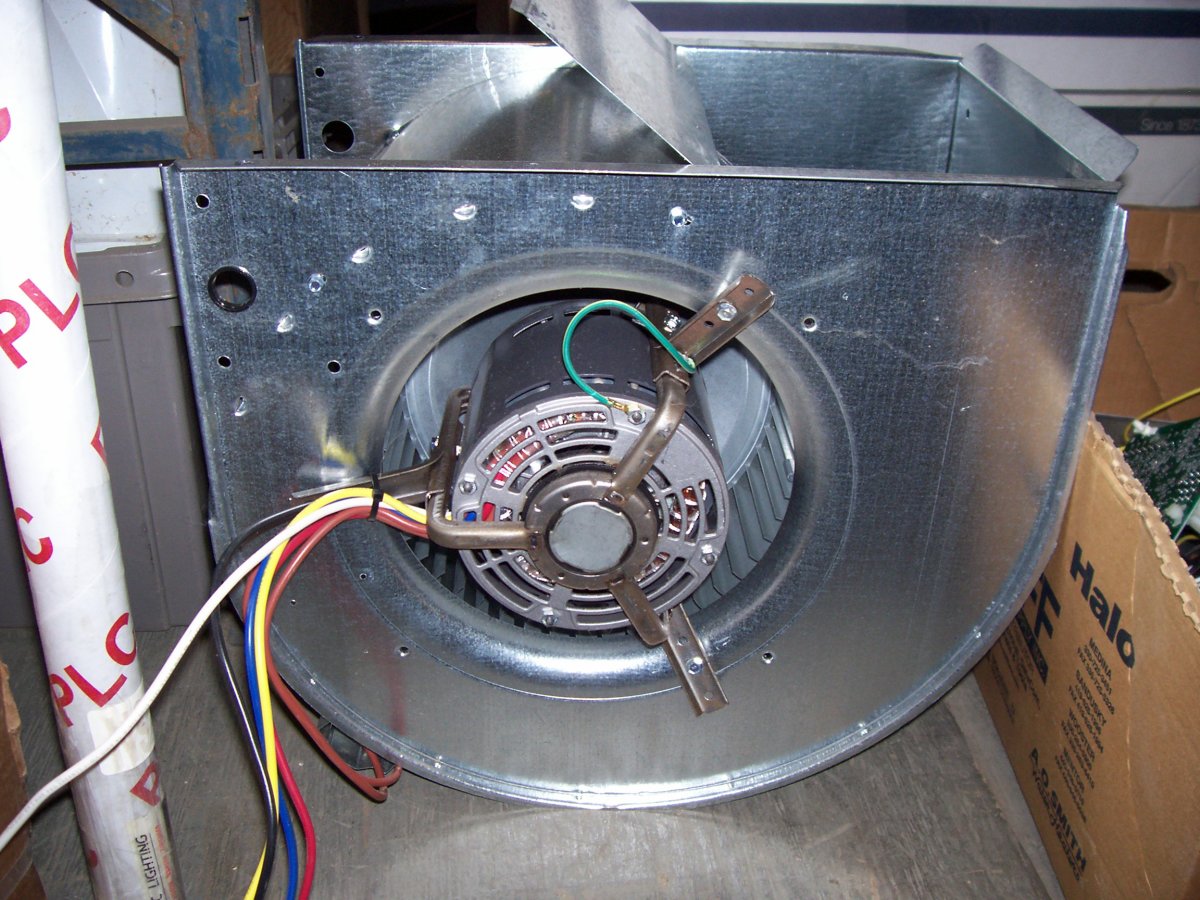How To Oil Furnace Blower Motor

Oiling Your Furnace Blower Motor: A Guide for HVAC Professionals and Aspiring Technicians
The furnace blower motor is the heart of your HVAC system, responsible for circulating heated air throughout your home. Proper maintenance, including regular oiling, is crucial for ensuring its longevity and efficient operation. This article provides a comprehensive guide on how to oil a furnace blower motor, aimed at HVAC students, seasoned technicians, and employers seeking to enhance their understanding of this critical maintenance procedure.
Why Oiling Matters
A furnace blower motor relies on bearings for smooth rotation. Over time, the lubricant in these bearings can dry out, leading to increased friction, overheating, and ultimately, motor failure. Regular oiling replenishes this lubrication, reducing wear and tear and extending the motor's lifespan. Ignoring this simple maintenance task can result in costly repairs or premature motor replacement.
Safety First: Precautions Before You Begin
Before attempting any HVAC maintenance, safety should be your top priority. Follow these precautions meticulously:
- Disconnect Power: Always turn off the power to the furnace at the breaker box before beginning any work. Tag the breaker to prevent accidental re-energizing.
- Allow Cool Down: If the furnace has been running, allow sufficient time for the blower motor and other components to cool down to prevent burns.
- Wear Appropriate PPE: Wear safety glasses and gloves to protect your eyes and hands.
- Consult the Manual: Refer to your furnace's owner's manual for specific instructions and safety guidelines related to your model.
Tools and Materials You'll Need
Gather the following tools and materials before starting the oiling process:
- Oil: Use a lightweight, non-detergent electric motor oil, specifically formulated for lubricating electric motors. SAE 20 or SAE 30 are common choices. Never use WD-40 or other penetrating oils, as these are not designed for lubrication and can damage the motor.
- Oil Can or Applicator: An oil can with a long, flexible spout is ideal for reaching the oil ports. Alternatively, a small syringe or dropper can be used.
- Lint-Free Cloths or Rags: Use these to wipe up any spills and keep the work area clean.
- Screwdriver or Wrench: You may need these to remove access panels or the blower motor assembly.
- Flashlight or Work Light: Good lighting is essential for seeing the oil ports and working safely.
Step-by-Step Guide to Oiling the Blower Motor
The following steps provide a general guide to oiling a furnace blower motor. Always refer to your furnace's owner's manual for specific instructions and illustrations related to your model.
- Locate the Blower Motor: The blower motor is typically housed in a compartment within the furnace cabinet. It's usually a cylindrical motor connected to a blower wheel.
- Access the Motor: Remove the access panel or blower compartment door. You may need a screwdriver or wrench to loosen the screws or fasteners.
- Identify the Oil Ports: Look for small, often labeled oil ports or oil caps on the motor housing. These are usually located on the front and rear of the motor. Some motors may have rubber or plastic plugs covering the oil ports.
- Clean the Area: Use a lint-free cloth to clean around the oil ports, removing any dirt or debris.
- Apply the Oil: Carefully insert the spout of the oil can or the syringe into the oil port. Apply a few drops of oil (typically 2-3 drops) to each port. Avoid over-oiling, as this can attract dust and dirt.
- Turn the Motor Shaft (Optional): If possible, manually turn the blower wheel a few times to help distribute the oil throughout the bearings.
- Replace Oil Port Covers: If the oil ports had covers, replace them securely.
- Clean Up Spills: Wipe up any spilled oil with a lint-free cloth.
- Reassemble the Furnace: Replace the access panel or blower compartment door, securing it with the screws or fasteners.
- Restore Power: Turn the power back on at the breaker box.
- Test the Furnace: Run the furnace to ensure the blower motor is operating smoothly and quietly.
Troubleshooting Common Issues
- Motor Won't Start: Check the breaker, wiring connections, and motor capacitor. If the motor still won't start, it may need to be replaced.
- Motor is Noisy: Oiling the motor can often resolve minor noises. However, persistent or loud noises may indicate worn bearings or other mechanical problems.
- Motor Overheats: Overheating can be caused by inadequate lubrication, a dirty blower wheel, or a faulty motor. Check and address each of these potential causes.
Preventative Maintenance for Longevity
Regular maintenance extends the life of your furnace blower motor. Schedule professional HVAC maintenance annually. Here are key tips:
- Regular Oiling: Oil the blower motor at least once a year, or more frequently if recommended by the manufacturer.
- Filter Replacement: Replace the furnace filter regularly (typically every 1-3 months) to ensure proper airflow and prevent the motor from overheating.
- Blower Wheel Cleaning: Periodically inspect and clean the blower wheel to remove any accumulated dust or debris.
- Professional Inspection: Schedule annual professional HVAC inspections to identify and address any potential problems before they escalate.
HVAC Career Paths and Certifications
The HVAC industry offers diverse career paths, from entry-level technician roles to specialized positions such as system designers, installers, and service managers. The U.S. Bureau of Labor Statistics projects steady growth for HVAC mechanics and installers, with a median annual wage of $51,390 in May 2021. The best 10 percent earned more than $81,620.
Earning industry-recognized certifications can significantly enhance your career prospects and earning potential. Some of the most valuable certifications include:
- NATE (North American Technician Excellence): NATE certification demonstrates competency in specific HVAC areas, such as installation, service, and repair.
- EPA Section 608 Certification: Required for technicians who handle refrigerants, this certification demonstrates knowledge of proper refrigerant handling procedures and environmental regulations.
- HVAC Excellence: HVAC Excellence offers a range of certifications for different HVAC specialties, focusing on practical skills and knowledge.
- State and Local Licenses: Many states and municipalities require HVAC technicians to be licensed, demonstrating their knowledge of local codes and regulations.
Example Career Path: A student completes an HVAC program at a vocational school. They earn their EPA 608 certification and begin working as an entry-level technician. After several years of experience, they pursue NATE certification and advance to a senior technician role, specializing in furnace repair and maintenance. Eventually, they might move into a supervisory or management position within an HVAC company or start their own business.
The Employer's Perspective
For employers in the HVAC industry, hiring skilled and certified technicians is crucial for providing high-quality service and maintaining customer satisfaction. Investing in employee training and certification programs can improve employee retention, enhance service quality, and boost your company's reputation.
When hiring HVAC technicians, consider the following factors:
- Education and Training: Look for candidates with formal HVAC training from accredited vocational schools or apprenticeship programs.
- Certifications: Prioritize candidates with industry-recognized certifications such as NATE, EPA 608, and HVAC Excellence.
- Experience: Assess the candidate's experience in relevant areas, such as furnace maintenance, repair, and installation.
- Soft Skills: Look for candidates with strong communication, problem-solving, and customer service skills.
Conclusion
Understanding how to oil a furnace blower motor is a fundamental skill for any HVAC professional. By following the steps outlined in this guide and prioritizing safety, you can ensure the longevity and efficient operation of your furnace blower motor, saving you time, money, and potential headaches. Whether you're a student, an experienced technician, or an employer, investing in HVAC knowledge and skills is a smart choice for a successful future in this dynamic industry. Staying up-to-date with industry best practices and continuing education is essential for career advancement and providing exceptional service to your clients.










